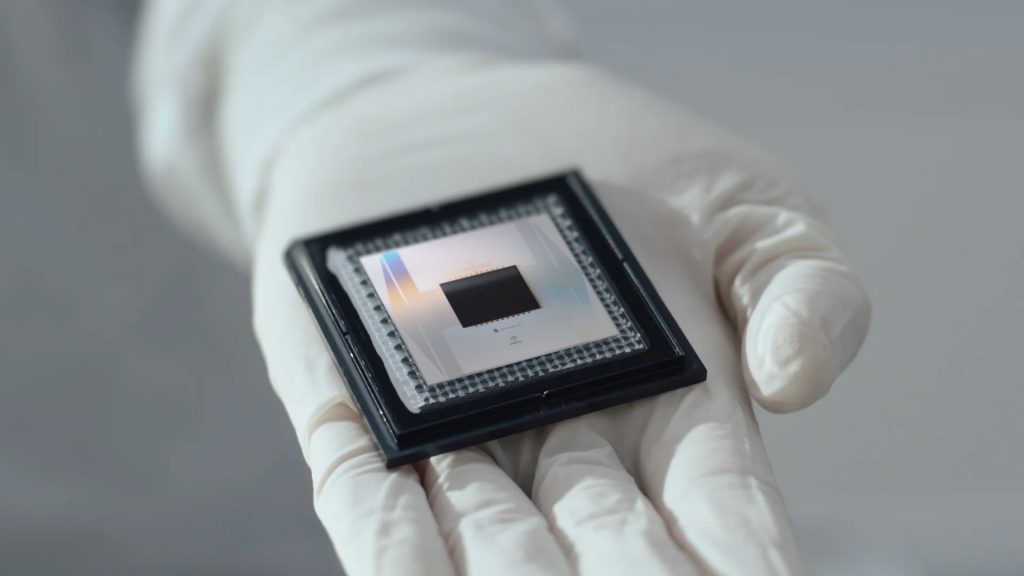A New Chapter Begins in the Book of Nature — With a Quantum Echo
By Antonia Rivers
Publication 22nd October 2025: 18:06 GMT
In the grand sweep of human ambition—from gazing at distant planets to dissecting the hidden machinery of living cells—our greatest adversary has always been complexity. Nature, in its intrepid richness, keeps pulling far ahead of the tools we build. Today, however, there’s a seismic shift: a machine has not only caught up—but leap-frogged.
Because the team at Google Quantum AI, with their quantum chip named Willow and a newly revealed algorithm dubbed Quantum Echoes, have just opened a door. Behind that door lies physics so intricate, material science so subtle, and biology so delicate that it once seemed forever out of reach of computation.
And yet—for the first time ever—they have shown verifiably that a quantum computer can beat a supercomputer at its own game.
1. Why this matters: the barrier nature has set
From the macro to the micro, our journey of discovery has been hampered by scale. Planets—we mapped. Cells—we imaged. Molecules—we began to model. But the interplay of quantum interactions—the subtle dance of electrons, the hidden structures of materials, the entangled states of matter—remained a frontier mostly scripted in theory, not computation.

Image Credit: Google Blog
Classical computers, bound by bits and Boolean logic, simply did not scale to the realm of the profoundly quantum. The more complex the system, the more quickly the classical approach collapses into hopeless slowness.
Enter quantum computing not as aspiration—but as execution.
2. What was achieved: Willow + Quantum Echoes
The story begins with Willow. According to Google’s own account, the Willow chip achieved two major breakthroughs:
* It demonstrated that as qubit count scales up, error rates scale down—a reversal of the usual quantum trend.
* It completed a benchmark computation in under five minutes—a problem that would take today’s fastest supercomputers an estimated 10²⁵ years (yes—ten septillion years) to finish.
Then came the algorithm: Quantum Echoes. Here’s how it works in essence:
* On the 105-qubit array of Willow, the team ran a series of quantum operations (gates).
* They then “perturbed” one qubit—like a butterfly flapping its wings in the quantum realm.
* Immediately, they ran the same operations in reverse.
* The forward and reverse flows interfere; the resulting signal—a “quantum echo”—reveals how different parts of the system have been interacting over time and space.
* The metric produced is called an “out-of-time-order correlator” (OTO), which quantifies how local perturbations spread and entangle across the system.
In effect: they turned the quantum computer into a sensor, a microscope for quantum interaction itself. And they pitched it against classical simulation—and won, by a factor of 13,000× in speed over one of the world’s fastest supercomputers.
What makes it verifiable is that the outcome can be repeated—on any quantum system, even on nature itself—and the same result will emerge. This is what shifts quantum from the “could someday” realm to “is now.”
3. Why this is truly eyes-opening
* From “could” to “can”: Quantum computing has long carried the label of potential. Today, we have concrete demonstration of a useful quantum computation that reliably outperforms classical.
* Measurement as discovery: The echo algorithm isn’t just a gimmick—it probes hidden dynamics. It gives us a new type of observational instrument on quantum systems, molecules, magnets—and even black-hole analogues.
* Scaling error correction cracks: One of the thorniest obstacles in quantum computing has been error rates rising with scale. Willow turned that on its head.
* Bridge to real-world science: In collaboration with University of California, Berkeley, the team used the algorithm to predict molecular structure (via NMR spectroscopy comparison) and validated the result. That’s quantum chemistry moving from chalkboard to lab.
4. What it means for tomorrow—far beyond hype
Let us not be fooled by the dazzling numbers into thinking “all problems solved”. This is an early advance—but a landmark one. Consider the implications:
* Drug discovery: Molecules in complex biological environments could soon be simulated with precision way beyond classical limits.
* Materials science: Novel materials—high-temperature superconductors, ultra-efficient batteries, exotic phases of matter—could emerge when quantum simulation becomes practical.
* Fundamental physics: The ability to probe entanglement, chaos, magnetism, and even models of black-hole dynamics could revolutionize our understanding of nature itself.
* Computational architecture: Classical + quantum hybrid systems will grow. Some calculations will run on classical supercomputers; others—those deeply quantum—will shift to devices like Willow and its successors.
And all this in the near-term. The announcement suggests that within five years we may see real-world applications that are only possible on quantum computers.
5. Sobering boundaries to keep in mind
* Willow contains 105 physical qubits—which, while impressive, is still a far cry from the millions of logical qubits required for many applications like cryptography.
* “Real-world applications” is still a horizon—not here everywhere yet.
* Some experts caution that the marketing around “breaking the universe” may overshadow the actual specificity of the achievement.
6. In short: a moment worthy of awe
When Galileo turned his telescope to the heavens, he changed our understanding of our place in the cosmos. When Darwin wrote On the Origin of Species, he changed our understanding of life’s tapestry. What the Willow chip and Quantum Echoes algorithm could herald is no less profound: a new way to understand nature at its most subtle level—by harnessing the quantum.
This is the sort of breakthrough that doesn’t simply increment an existing line of progress—it bends the trajectory. It says, “We are now in a new regime of computing.”
And as you—someone deeply invested in the future of technology—consider this: this moment might well mark the turning point when quantum computing stops being a promise, and starts being a tool for science, industry, medicine, and discovery.
In the shimmering glow of superconducting circuits deep in a quantum lab, the door to nature’s hidden opera has opened. Will we listen?
